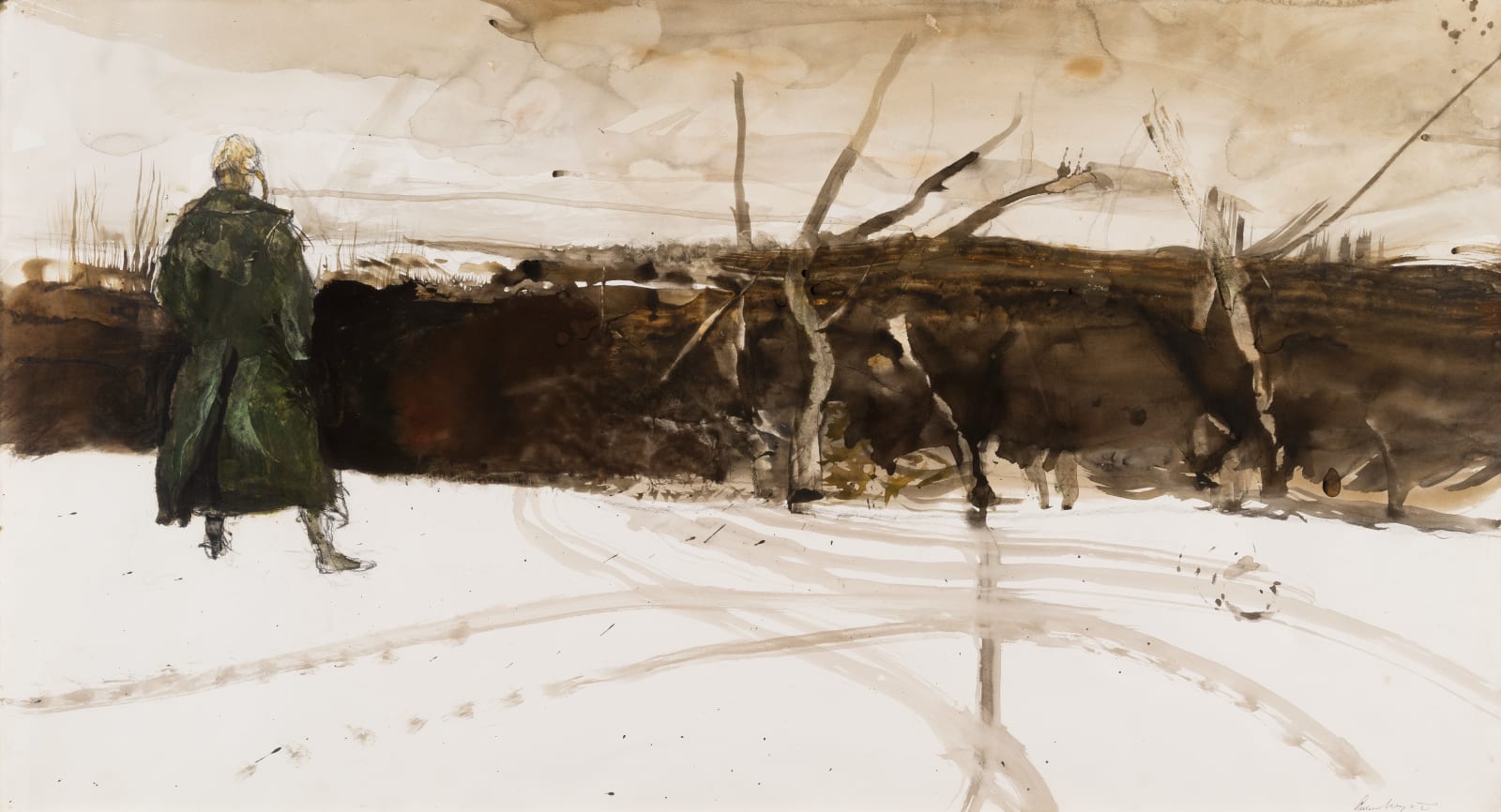Andrew Wyeth American, 1917-2009
53.3 x 98.7 cm
The Andrew & Betsy Wyeth Study Center of the Brandywine Museum of Art confirms that this object is recorded in Betsy James Wyeth's files.
Emerging from Andrew Wyeth's notorious Helga pictures, Blonde abounds with characteristically Andrew Wyeth motifs and methods. The Helga series consists of drawings, watercolors, dry brushes, and temperas of model Helga Testorf begun in 1971 and continued over the next decade and a half. Helga worked as a nurse and caretaker to the Wyeths' neighbors and friends, the Kuerner family. While the Kuerners themselves were frequent features in Wyeth's work, after being introduced to Helga, Wyeth painted her in secret for nearly fifteen years. When Wyeth unveiled the pieces in 1986, the cache of artwork generated intrigue, causing such a stir that Helga even adorned the covers of Time and Newsweek in the summer of 1986.
Wyeth described his relationship to Helga, explaining, "The difference between me and a lot of painters is that I have to have a personal contact with my models. I don't mean a sexual love, I mean a real love. Many artists don't recall the names of their models. I have to fall in love with mine… I have to become enamored. Smitten. That's what happened when I saw Helga walking up the Kuerners' lane." [1] Similar circumstances create a throughline in the art historical canon. Helga Testorf's role as Wyeth's muse parallels Sandro Botticelli's fifteenth-century depictions of Simonetta Vespucci and Eduard Manet's nineteenth-century masterworks featuring his favored model, Victorine Meurent.
In the present watercolor, the figure dwells in a serene moment of contemplation, frozen like the snow-covered earth depicted. The loden cape coat, of Austrian origin, became a staple in Wyeth's depictions of Helga, even appearing in indoor scenes, such as The Prussian (1985; Private collection). The heavy garment is traditionally seen in this earth-toned color, which here visually connects her with the environment. Blonde showcases the recurring theme of solitude in Wyeth's body of work. Featuring a figure turned away, gazing wistfully into the distance, Blonde echos Wyeth's first great success, Christina's World (1948; The Museum of Modern Art, New York).
As one of the foremost 20th-century realists, Wyeth's aesthetic remained consistent throughout his extensive career, resulting in a cohesive body of work successfully realized in various media. Within this body of work, the Helga series stands out as a remarkable achievement in Wyeth's acclaimed career, representing a series of masterstrokes from an icon of twentieth-century art.
[1] Andrew Wyeth and Thomas Hoving, Wyeth on Helga: The Helga Paintings in Andrew Wyeth's Own Words, Naples: Naples Museum of Art, 2006, p. 7
Provenance
The artist; toPrivate collection, 2007
Exhibitions
YUAN Space, Beijing, China; Hong Kong Exhibition Center, China; and Christie's, New York, Andrew Wyeth in China, 2012Meredith Long Gallery, Houston, Texas, Andrew Wyeth, December 5, 2013-January 19, 2014
Forum Gallery, New York, Andrew Wyeth: Five Decades, January 16-February 22, 2020
Forum Gallery, New York, That Eighties Show, July 15-September 18, 2021
Literature
Molly Glentzer, "Meredith Long Surveys the Landscapes," Houston Chronicle, December 1, 2013, pp. H8, H9, illus. in colorSubscribe to our mailing list to receive updates from the gallery
* denotes required fields
We will process the personal data you have supplied in accordance with our privacy policy (available on request). You can unsubscribe or change your preferences at any time by clicking the link in our emails.

